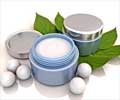
Vlasta Cunja, corresponding author of the study published in the Journal of the American Society for Horticultural Science, said that previous research has linked phenolic and mineral composition of rose hips to their antioxidant activity. Phenolic antioxidants have also been identified in the petals of several rose species, but research on rose leaf polyphenols has been rare. Using high-performance liquid chromatography/mass spectrometry, Cunja and colleagues determined leaf and petal phenolic profiles of four indigenous rose (Rosa) species (R. canina, R. glauca, R. rubiginosa, R. sempervirens) traditionally used for medicinal purposes and three modern rose cultivars (Rosarium Uetersen, Ulrich Brunner Fils, Schwanensee).
The researchers identified seven different anthocyanins--the principal pigments responsible for intense red to mauve colors--in the rose petals. They found a "strong correlation" between color parameters and total anthocyanin content in petals. Additionally, 31 flavonols were detected in the rose petals; flavonol content varied significantly among species and cultivars analyzed. The analyses tentatively identified 30 different flavonols in the leaves of different rose species and cultivars.
"Our analyses revealed significant variations in the content and composition of phenolic compounds among species, cultivars, and plant petals and leaves," Cunja said. Interestingly, distinct differences in the distribution of leaf phenolic compounds were found between indigenous species and modern rose cultivars. Among the species investigated, leaves of Rosa canina stood out for their high and varied phenolic content. "The traditional practice of using Rosa canina for medicinal purposes appears scientifically justified because (the species) contains significantly more phenolic antioxidants compared with other naturally occurring rose species of the region," Cunja said.
The modern cultivar 'Schwanensee' was determined to be most dissimilar of all cultivars analyzed as a result of the low levels of phenolic constituents found in the leaves. The authors said this could potentially be linked to the cultivar's susceptibility to diseases. They concluded that species are likely more suitable than cultivars as a potential source of leaf phenols with antioxidative activity.
Source-Eurekalert










